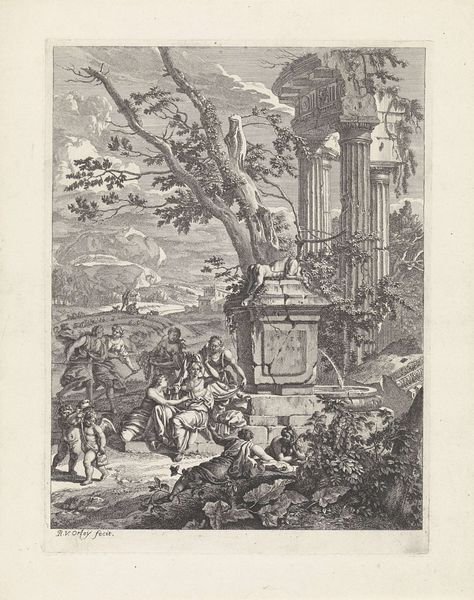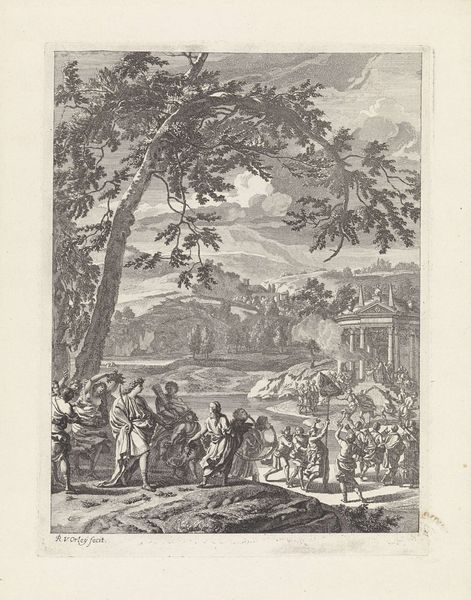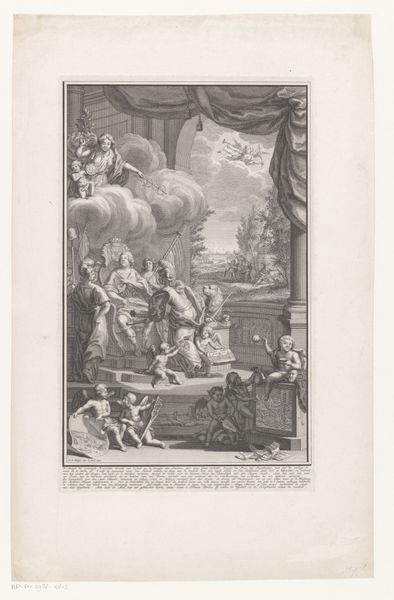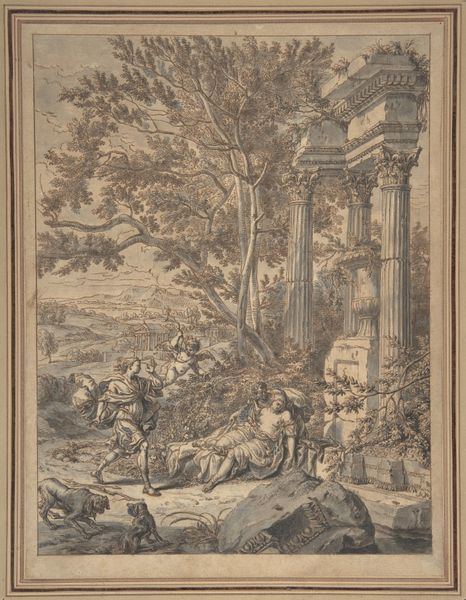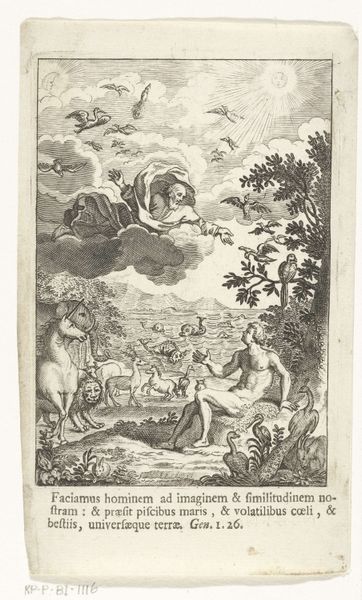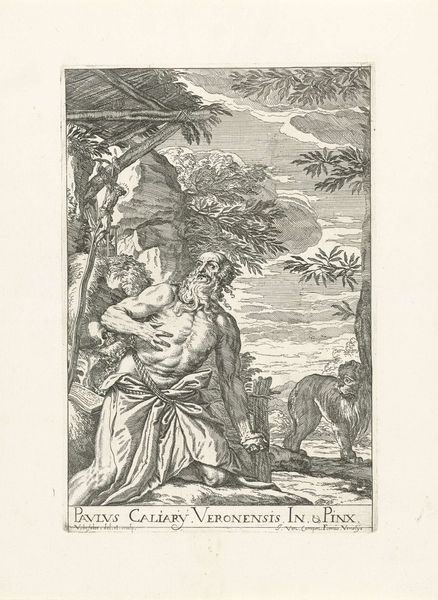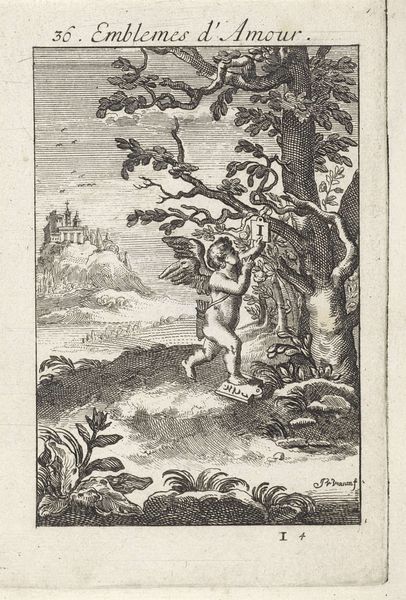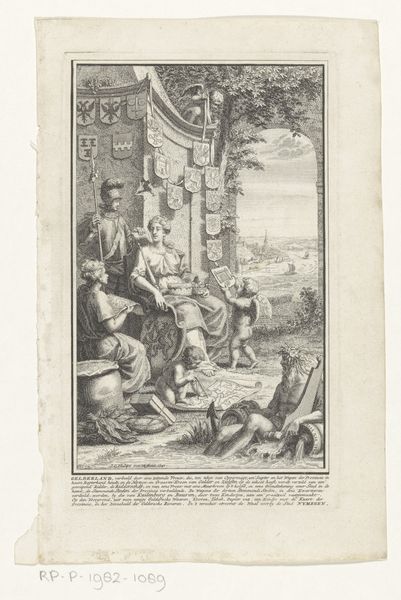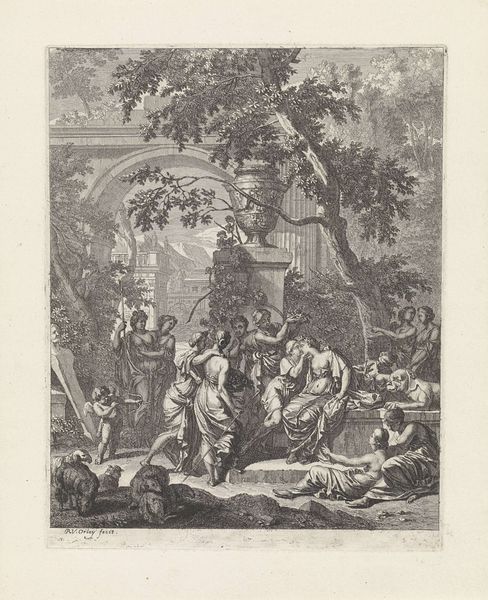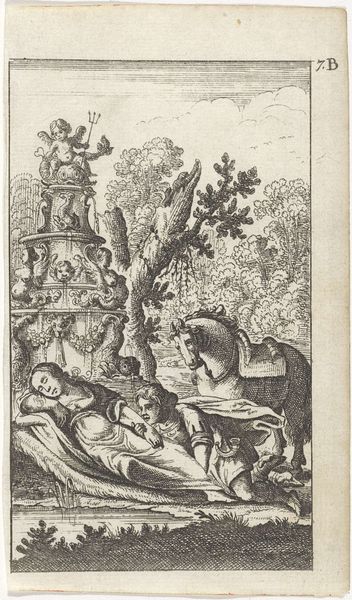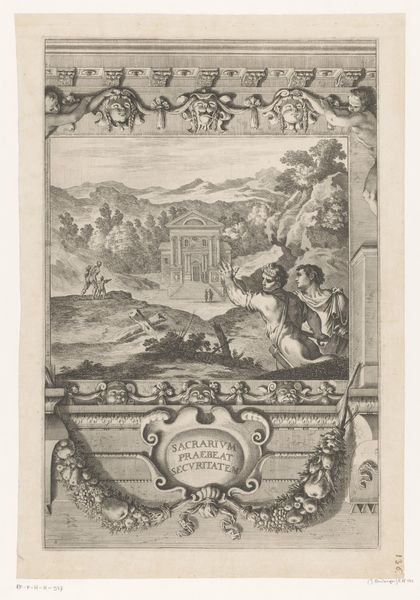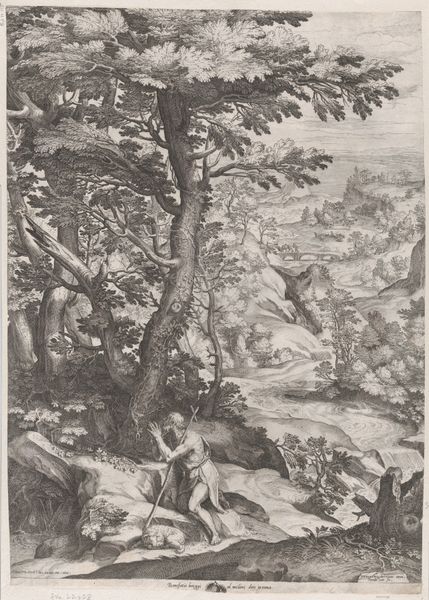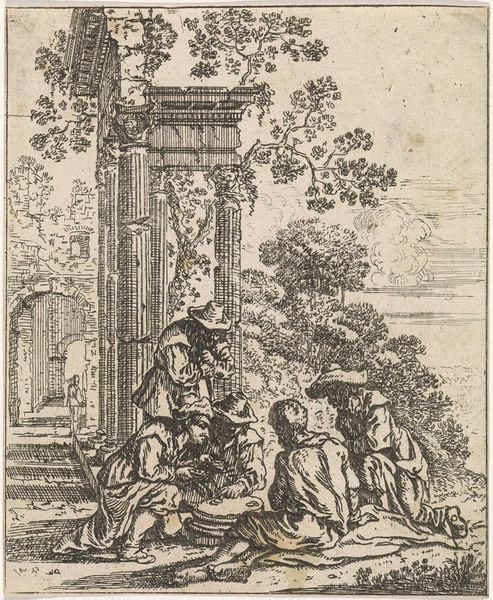
etching
#
baroque
#
etching
#
landscape
#
figuration
#
history-painting
Dimensions: height 260 mm, width 193 mm
Copyright: Rijks Museum: Open Domain
Editor: This is "Silvio raakt Dorinda met een pijl," an etching by Richard van Orley from around 1695 to 1705. I'm immediately struck by the theatricality of the scene, the figures arranged almost like actors on a stage. What is your reading of this print? Curator: This etching encapsulates the Baroque era's fascination with drama and complex narratives. Notice how van Orley places the classical ruins right alongside the natural world. It’s not merely a backdrop, but an active participant in the scene. What tensions might be visualized with that contrast? Editor: It almost seems like it is meant to illustrate conflict – the ruins of the past versus a supposedly natural state. Curator: Exactly. And if we consider this through a feminist lens, how might we interpret the depiction of Dorinda being struck by Silvio's arrow? Is this a representation of idealized love or a more problematic portrayal of vulnerability and submission? What implications arise? Editor: That’s a great point. I was initially seeing it as just a mythological scene, but thinking about it critically… the power dynamics are really uneven. Dorinda is passive, reclining, while Silvio is active and seemingly inflicting something upon her. Curator: Precisely. Etchings like these were often used to reinforce existing social hierarchies, and an unquestioning acceptance of these narratives naturalizes power imbalances. Does acknowledging the politics inherent in this piece alter your initial response to its "theatricality"? Editor: Definitely. The theatricality now feels less like innocent drama and more like a performance that perpetuates certain cultural expectations and power structures. Curator: It’s about recognizing that art isn’t created in a vacuum. Exploring its historical and social context invites deeper engagement and understanding. Editor: This has shifted how I see art, considering not just the aesthetic, but the complex web of social and political meanings it carries. Curator: And that awareness will empower you to analyze any artwork critically, recognizing both its beauty and its potential biases.
Comments
No comments
Be the first to comment and join the conversation on the ultimate creative platform.
